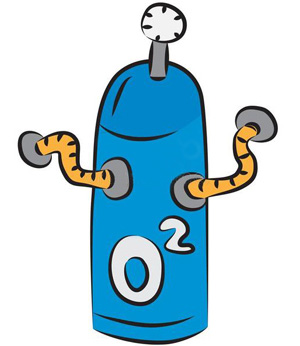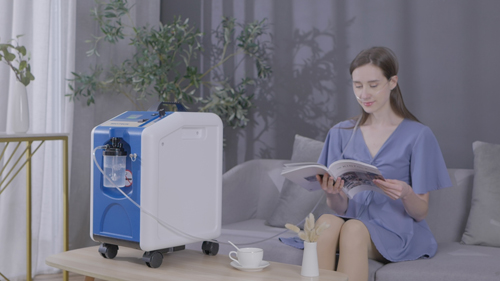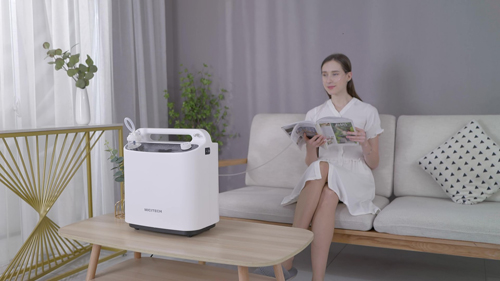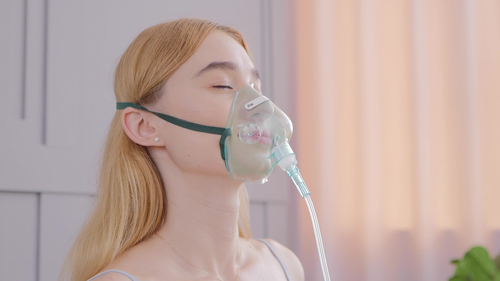18 Mar 2022
Oxygen concentrator has a wide range of uses, not only for medical institutions, but also for home oxygen therapy and health care.
Use of oxygen cylinders
Common household oxygen therapy devices include oxygen cylinders and oxygen concentrators. The oxygen cylinder is a high-pressure container used for storing and transporting oxygen, and consists of four parts: the cylinder body, the cylinder hoop, the cylinder valve and the cylinder cap. There is a pressure gauge on the oxygen cylinder, through the pressure gauge you can know the amount of oxygen in the cylinder. There are many kinds of medical oxygen cylinders in the market, but the most common one used for household oxygen therapy is the 10L oxygen cylinder.

Types of Household Oxygen Concentrator
Oxygen concentrator is a kind of machine to produce oxygen. There are four main types of household oxygen machines:
◉Chemical oxygen concentrator;
◉Oxygen-rich film oxygen concentrator;
◉Electronic reaction oxygen concentrator;
◉Molecular sieve oxygen concentrator.
At present, there are mainly two types of oxygen concentrator in the market: medical type and health care type. Medical oxygen concentrator mainly use the molecular sieve principle to produce oxygen, this principle of oxygen generators to produce a higher concentration of oxygen, strong stability, is now commonly used in home oxygen generators. Health care oxygen generators mainly use the polymer oxygen-rich membrane principle, electrolytic water principle and chemical reaction oxygen generation principle. The main characteristics of these oxygen generators are lower noise, lower oxygen flow and oxygen concentration, but higher cost of use, as follows.
The electronic oxygen concentrator adopts the process of precipitating the oxygen in the air through the oxidation and reduction reaction in the solution, so it will not produce dangerous hydrogen gas like the electrolysis of water oxygen.The whole machine is relatively quiet, but these products are very strict in the process of handling and use, and are never allowed to be tilted or inverted, otherwise the solution will flow into the oxygen delivery tube, and then sprayed into the nasal cavity, causing serious injury to the user. At the same time, the process of oxygen production is easy to produce other oxides, and the oxygen produced is easy to contain impurities of compounds, and this type of oxygen production method uses more electricity.
Medical molecular sieve oxygen concentrator is an advanced gas separation technology, using zeolite molecular sieve, variable pressure adsorption technology and vacuum variable pressure adsorption technology, using physical methods to directly separate the oxygen and nitrogen in the air, filter out harmful substances in the air, so as to obtain a high concentration of oxygen (93% 3%) in line with national medical standards, that is, the system is used, fresh and natural, there is no high pressure, no explosion and other dangers. Medical molecular sieve oxygen machine is the most mainstream home oxygen machine in the market, its oxygen concentration is high, strong stability, can be 24h continuous on the machine.

Chemical oxygen concentrators use a reasonable formula of chemical agents and are used in specific situations. Chemical oxygen concentrators are not suitable for home oxygen therapy because they have many defects such as simple equipment, cumbersome operation, high cost of use, need to invest a certain amount of money for each oxygen intake, and cannot be used continuously.
Oxygen-rich film oxygen concentrator adopts the membrane oxygen production method, filtering the ammonia molecules in the air through the membrane, and the output oxygen concentration can reach 30%, which has the advantages of small size and low electricity consumption.
The portable oxygen concentrator is similar to a household oxygen concentrator, but smaller and easier to carry. The machine comes with batteries and power accessories and can be used both indoors and outdoors. The oxygen concentrator is an electric device that absorbs indoor and outdoor air and removes nitrogen from it through a filtration system to provide an oxygenated gas mixture (usually oxygen with a volume fraction of 0.85 to 0.95), providing a maximum output oxygen concentration of 96%. Portable oxygen concentrators are limited to patients requiring low oxygen flow rates (<3 L/min). In addition, these oxygen concentrators cannot be used in combination with positive pressure ventilation devices, such as non-invasive ventilators, and are not recommended for use at night.

How to use the oxygen concentrator
FiO2 can be converted from atmospheric oxygen concentration and oxygen concentrator flow rate. at standard atmospheric pressure and with a nasal cannula or nasal plug, the simple formula is as follows: Arrival alveolar oxygen concentration (%) = 21 + 4 x oxygen concentrator flow rate (L/min). For patients who need LTOT, especially those who need to use non-invasive ventilator therapy at the same time, it is recommended to use the oxygen concentrator with a maximum oxygen flow rate of not less than 5L, which not only has a large adjustable range and can provide a relatively high oxygen flow rate, but also, more importantly, can ensure a long time oxygen supply and a stable oxygen output concentration of more than 90%, so as to achieve good therapeutic results.
Use of nasal catheter, nasal plugs and face masks
Nasal catheters are plastic or silicone catheters with apical and lateral openings, which can be inserted into the vestibule of both nostrils. The nasal plugs are made of hard and smooth plastic or silicone material and are divided into single and double plugging methods. Single plug method is to choose the appropriate model plug in one side of the nasal vestibule, and close contact with the nasal cavity, the other side of the nostril open, inhalation only into the oxygen, so FiO2 is relatively stable. Double plug method is two smaller nasal plugs placed in both nostrils at the same time, leaving empty space around the plugs to breathe air at the same time, the double plug method is more comfortable for patients, but the FiO2 is not stable enough. The suitable oxygen flow rate is 1~6 L/min. after the oxygen flow rate >5 L/min, the FiO2 will not increase.

Nasal catheter and nasal plugs are suitable for patients who do not require high oxygen flow and FiO2. The advantages of this method of oxygen administration are simple equipment, easy to use, well tolerated by patients, easy to move around, convenient to eat and talk, and it is suitable as the preferred oxygen administration device for home oxygen therapy. The disadvantage is that FiO2 is unstable and is affected by tidal volume and respiratory rate. When the oxygen flow rate > 5 L/min, it can lead to dryness of the nasal mucosa, which is often not tolerated by patients. If the patient requires oxygen flow rate >6 L/min, the patient should change to other oxygen absorbing device. Oil-based lubricants should not be used for dry nasal mucosa, but water-based lubricants.
Mask oxygenation is suitable for patients with open mouth breathing, nasal disease affecting oxygen intake, and higher requirements for FiO2. The commonly used device is the ordinary mask with some small holes on the mask, so that the exhaled air can be discharged from the small holes and the air can also enter from the small holes. The suitable oxygen flow rate for mask oxygen is 6~10 L/min, which is commonly used in home oxygen therapy. The advantages are that it is easy and economical, and the FiO2 is higher than that of nasal catheter; the disadvantages are that it is difficult to achieve high oxygen concentration, affects the patient's eating and talking, and has the risk of accidental aspiration. Caution: The oxygen flow rate should be ≥6 L/min to flush out carbon dioxide (CO2) in the exhaled breath and prevent repeated inhalation of CO2.

Keywords: oxygen concentrator
Originally published 18 Mar 2022, updated 18 Mar 2022.